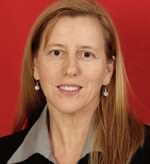Column Name
Title
A few months ago, we asked for news from alums pursuing nonperformance careers. One of the most unusual replies was from Beth Starosta-Desmond, who graduated from the Dance Division in 1986, danced with Momix for 10 years—and ended up being a forensic firearms investigator for the North Carolina Crime Laboratory. Shortly after testifying about a felony case, she spoke to Journal editor Susan Jackson about her career—and how it actually does tie in with what she learned at Juilliard.
Body
Tell us about your path to Juilliard.
Growing up in Wilkes-Barre, Pa., I always wanted to go to New York City be a classical ballerina, but my mother wanted me to be in a structured environment and go to college, so, together with my dance teacher, we compromised on Juilliard, which was a fantastic experience that kind of made me what I am.
How so?
It was so disciplined—it was almost militaristic. You had to hold yourself accountable. They were strict, and you had to get a spine. Juilliard also taught you both to focus and to be diverse. It made me a very well-rounded person because it exposed me to so many things I wouldn’t have been otherwise: modern dance, Indian dance, dance notation (which I’d never heard of). And the fact that there were people from all over the world, that was a big deal for me coming from a small city. But at the same time, being in such a tight-knit group, you became very good friends with people.
How did it transfer?
After Juilliard, I got into Momix and I was able to go on tour with them for about 10 years—and be disciplined enough to perform night after night after night and still stay very grounded. And then, after my career as a dancer, that discipline gave me the wherewithal to go back to school and get another degree and go into a profession that was completely out of my element—and be able to excel.
And how did you end up in such a different profession?
I started realizing in my mid-to-late 20s that I wanted to eventually get married and have a child, but I was always touring. And then, I started to think about studying psychology and eventually decided to stay in New York City and go to John Jay College of Criminal Justice for forensic psychology. I always liked challenges, and I think that goes back to Juilliard: they always challenged you and found ways for you to challenge yourself. While I was doing an internship for a forensic lab, I discovered that I was very good on the microscope: a lot of what that requires is pattern recognition, and a lot of what I did as a dancer is patterns—that’s how you remember dances.
How did you end up in North Carolina?
I worked in a Westchester forensic lab for three years, and in the meantime, I’d gotten married and we’d had a baby [their son is now 11]—and then I got hired—because of my microscope and pattern recognition skills—by the North Carolina Crime Laboratory. It certainly wasn’t my knowledge of firearms: I hate guns! But then they promoted me to firearms inspector, and that’s when I had to learn about guns. To do what I’m doing now, you have to go to an academy and be certified as a special agent for the State Bureau of Investigations. There was a big physical fitness component and I broke records for the obstacle course for men and women, and I absolutely attribute that to my dance training. I was very proud that I beat a bunch of people who had joined the S.B.I. as field agents—and they were military guys!
What is your case load like?
A lot of our cases are gang-related, but I get any kind of case that deals with firearms. If somebody has used a gun, the bullets and cartridges [are submitted to me to find out] if they’ve been fired by a particular gun. Then I’ll get the bullets from the medical examiner, and they’ll say, can you tell me whether these bullets came from this gun? I’ll investigate with my microscope and I’ll go down to the shoot tank, which is filled with water, and I’ll shoot and then take the fired projectile and compare to the questioned item to see if they’re the same. And then I’ll testify. And testifying is basically a performance—I’m testifying facts, but there’s the whole courtroom scene, the defense is carrying on, trying to make it dramatic for the jury. You have to stay calm and focused and being bombarded by these people. Juilliard really helped me be good at this.
What’s the hardest thing about your job?
I’m such a bleeding heart, so the hardest thing is to see someone, especially a teenager or young adult who’s in court, and he might look angelic, but he shot someone in the face with a shotgun. I feel bad for suspects, I feel bad for victims. When I’m in my office, they’re just names on a piece of paper, and then a year or two later, you testify, and you sit there and listen, and they’re no longer just names—that’s rough.
So is it like CSI?
It’s CSI-ish but we don’t do things on our coffee break—and it seems like they work on just one case at a time; I have 20 cases in my backlog, and 1,000 more in storage, so I don’t have the luxury of walking around and talking to people about it. And it’s definitely not as easy as they make it look; the cases take a long time, and when you’re done, you don’t get balloons and confetti, you just start the next one.





